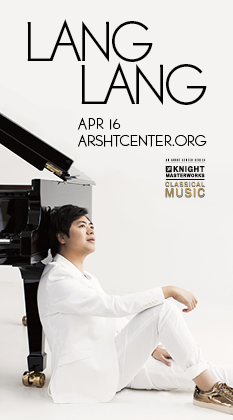Bronfman’s artistry at its peak in New World Center recital

Yefim Bronfman
In the first piano event of the New World Center’s recital series, Yefim Bronfman presented a performance Sunday afternoon that demonstrated mature artistry, welding formidable technique with interpretive depth. Bronfman’s program was refreshingly off the beaten path, eschewing the flashy Rachmaninoff showpieces that have often been his calling card for less frequently heard Brahms, Bartok and Prokofiev.
Bronfman certainly did not need to warm up with a short classical era piece in the traditional recital mode, instead opting to open with Brahms’ massive Piano Sonata No. 3 in F minor. The work of a twenty-year-old composer, this impassioned score would be Brahms’ last large-scale solo keyboard work. Bronfman’s command of the wide-ranging octaves in the initial Allegro maestoso impressively conveyed nearly flawless digital dexterity, the fierce power of his playing tempered by a noble and caressing lyricism. Turning rhapsodic and eloquent in the Andante espressivo, Bronfman’s lightness of touch enhanced Brahms’ melodic inspiration.
The pianist’s sweeping, relentless sense of pulse was almost demonic in the Scherzo; yet the pearly threads of tonal color in the central episode were exquisite. In the Intermezzo, Bronfman blended the left hand’s sounding of the four-note motif from Beethoven’s 5th Symphony with the vibrant melodic line in the right hand, a textbook demonstration of pianistic command. The dance-like rhythmic impetus of the finale was dispatched with vigor. This rarely heard score proved a splendid vehicle for a virtuosso at the height of his powers.
Bronfman was joined by New World Symphony clarinetist Jason Shafer and violinist Vivek Jayaraman for Bartok’s Contrasts. This bracing 1938 score was conceived for Josef Szigeti and Benny Goodman who performed and recorded the work with the composer at the piano. A potent mix of Hungarian folk melodies and dances and Bartok’s tart, dissonant harmonies, Contrasts is a tour de force for the three players.
Shafer’s mellow, agile clarinet launched the opening “Recruiting Dance,” his klezmer leaps in the instrument’s top register imbuing the music with raw, wild intensity. The central “Relaxation” movement is one of Bartok’s eerie night music creations, ominous and agitated. Playing with admirable restraint for two movements, Jayaraman unleashed blazing virtuosity in the concluding “Fast Dance,” switching to a violin retuned to diminished fifths with pungent verve. Bronfman assayed Bartok’s typically hyper keyboard line with incendiary panache.
Prokofiev’s Piano Sonata No. 8 is the last of his three wartime sonatas. Premiered in 1944 by Emil Gilels, the piece is somewhat lighter in tone than its two predecessors but remains a knuckle-busting trial that only the best pianists need attempt.
Bronfman conquered its considerable technical hurdles, bringing winning elegance and subtly calibrated dynamics to the score’s contrasting moments of melodic beauty. Capturing the pensive mood of the introduction, Bronfman gave full percussive weight to the Allegro. The balletic grace of the Andante presaged a high-speed whirl through the closing Vivace without loss of musical accuracy or clarity. Bronfman pinpointed the volatile mood swings that swirl through Prokofiev’s portrait of a dangerous chaotic era.
Posted in Performances
Leave a Comment
Sun Jan 6, 2013
at 10:18 pm
No Comments





